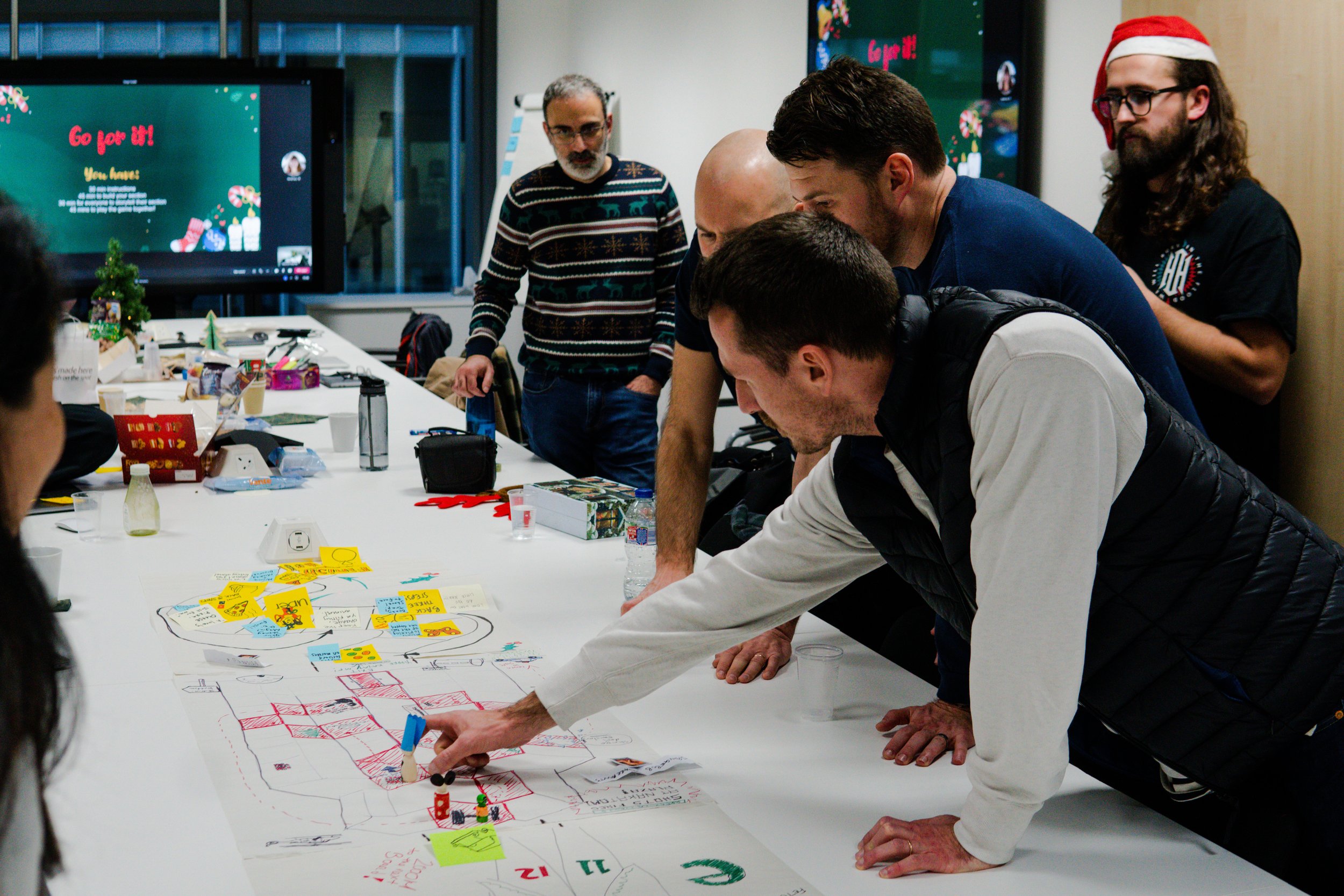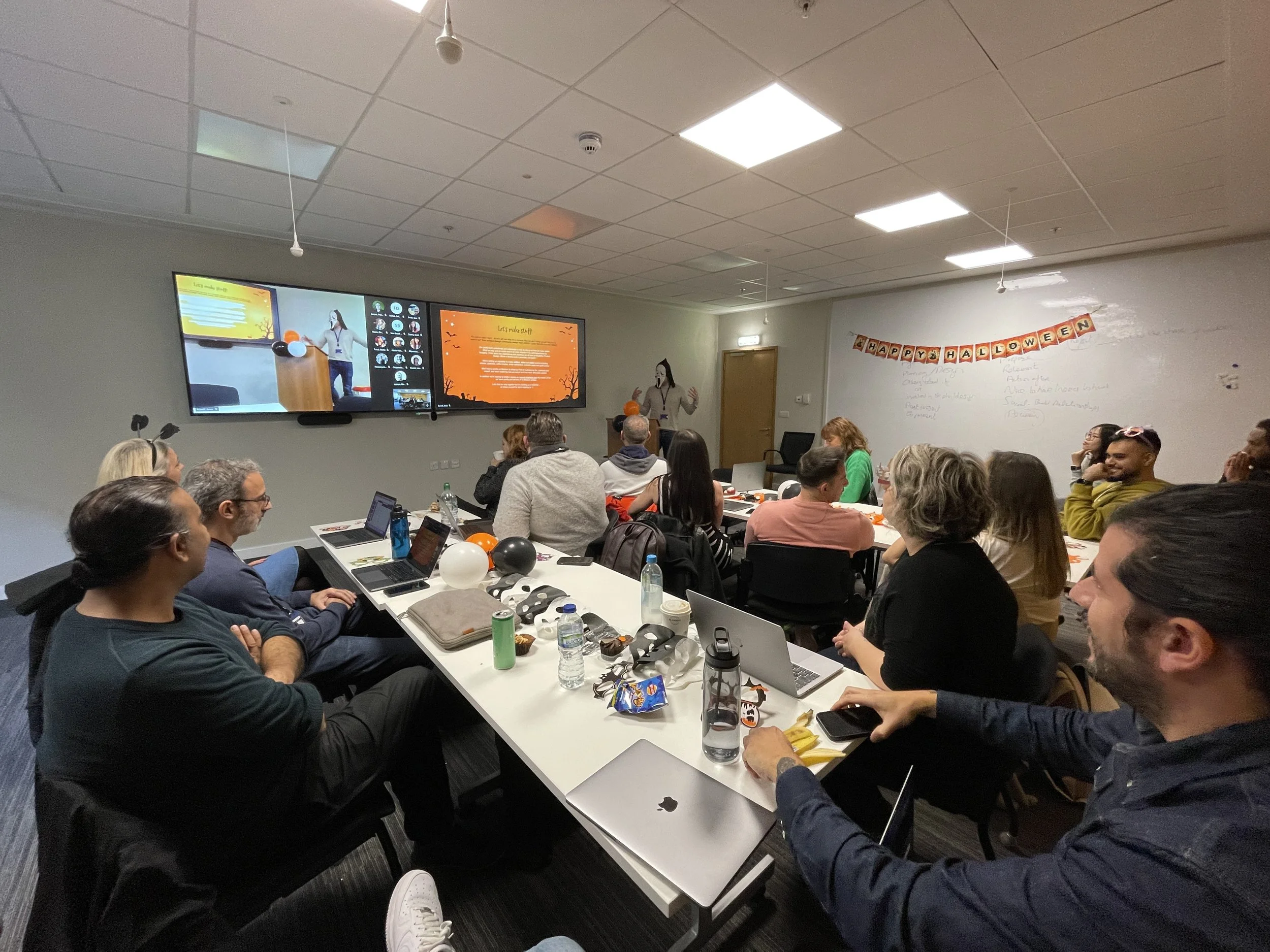
My time as a Principal Product Designer at Kingfisher Retail Group
Company
Kingfisher is a retail group that includes brands such as B&Q, Screwfix, Tradepoint in the UK. And in Europe, Castorama and Koctas brands.
The Kingfisher Product Design and Research team was made up of 35 people, covering design, research and service design.
My role
The Principal role involved both being and individual contributor, lead and some management.
I led a team that created new experiences across the group’s different brands and geographies.
This included initiating and leading activities to grow product design and research culture, operations and maturity within the retail group - making it a great place to do great work.
Impact
Growing the team’s talent and culture
Embedded Design Thinking
Scaled up the team
Leading strategic redesign
Leading projects as an individual contributor
Key activities
In addition to my role as a designer I was accountable for driving improvements to the way our team worked and our design maturity.
Here are some of those efforts
Growing the team’s design maturity
I initiated and led a series of efforts to build teams design maturity, our design strategy and our operations. Supporting the Head Of Design, Anna Burrell.
Creating a design Guild to share knowledge and build skills
Problem
As a newly formed, remote and international team, there was gap in our collaboration and connection as a broader team.
Action
I set up a creative get together hosted by one of the team each month on a topic of interest
Team members at different stages of their careers weren’t having enough opportunities to learn from more senior designers, one of the benefits of a large design team. Also, we needed to collaborate across our other crafts more, to support each other as we took on new projects together.
The problem was supported by feedback from a team survey I ran regarding remote working to proactively improve the team’s working conditions with the Head Of Design.
I drew on my experience at IBM, where design jams I had taken part in had been really popular. I brought together a volunteer from each of the crafts to help plan and run it. Each month someone in the team could volunteer to host the Guild and run it on a topic they chose. We would support and plan them.
Examples Guild sessions over 2 years
A Guild on research bias, we themed the room and the activity, incorporating horror films and characters into a fun knowledge sharing team activity.
Quick flyers would be sent out within the business on the Guild topic and host - it was important to sell these sessions given the care that went into hosting them.
A Guild on design culture in Asian countries. A presentation followed by designing “super” apps together.
Hosted by one of my team, who previously had not hosted a workshop before and wanted to improve her presentation skills.






The Guilds sessions took off and ran for 24 months. Resulting in stronger team relationships that contributed to day to day project collaboration and knowledge sharing.
Challenges
Creating content to work across different timezones, office locations and hybrid setups.
Differing opinions on attending
Getting budget using qualitative feedback
Getting feedback the right way without the initiative being forced fun or a project
Having a Plan B should someone hosting fall sick when arrangements for 30+ people have been made
Getting the balance right in the session, ie, length of session, balance of information, activity time and effort
The results
It took off and ran for 24 months, resulting in stronger team relationships that contributed to day to day project collaboration and knowledge sharing.
90% voluntary attendance over 24 months it ran
24 sessions hosted by volunteers
50% of team volunteered to host a Guild session
Positive feedback, reflected in positive impact to broader company employee satisfaction surveys
Noticeable change, more social, chatty vibes in team
People started bringing home cooked food along to share!
Embedding design thinking across the brands in the Kingfisher group
Building relationships with Product and Engineering was really important to the success of our team’s impact and using our full skillset across the brands varying design maturity.
Context
We had a mix of brands and teams with varying experience in user centric design, mainly due to the different types of projects. For example, a more logistics based team may never had needed to work with design, but could benefit from using Design Thinking methods.
We wanted to share the skillsets we were using more broadly and work with teams more widely in the business.
Objectives
My counterpart and I in Service Design took it upon ourselves to create a Kingfisher Design Thinking programme. The intentions were to
Demonstrate the value of user centred design within areas of the group who weren’t so familiar
Create case studies, playbooks, interactive workshops, presentations
Create shared approach
Build better working relationships and add design value further across the business
Process
Created materials specific to Kingfisher, kept in a central Design Thinking website
Promote to approx 70 designers and get aligned
Find advocates within the business
Apply our process (or parts of process where applicable) on a deliverable project
Present initiative to product teams within the different brands from PM to Directors, circa 200 people
Work with L&D team to add our references to training initiatives across the group



Outcomes
Presentation to 200+ audience virtually
Design thinking advocates set up across the business
Training material created for L&D team
Knowledge hub website to compliment WoW transformation in the group
Templates and working docs
Case study projects ran using materials and new processes
Recruiting a great team and growing designers careers
I was responsible for recruiting Product Designers as our team grew quickly. To do this effectively I put in place a few new changes to our recruitment and joining process
Recruiting and developing designers transparently and consistently
Problem
We didn’t have a consistent approach and framework when recruiting that was specific to design. This gave an inconsistent experience with gaps, which was not good enough.
Introducing a recruitment framework for product design
I set up a framework to score design candidates consistently, removing any potential bias and using metrics based approach.
A new onboarding process for new starters
Finding the right people to work with takes a big investment in time and money. So it’s just as important the same effort was put into setting them up right upon joining.
Kingfisher had many complexities to it’s process, I’d recently joined the team myself and found conflicting info. I mapped out this process, identified gaps and the different people involved.
Changes included sharing the blueprint with all parties to improve consistency. Tying up the IT equipment process. A focus on first day and week, sharing what to expect.
The new starters that went through these simple but effective changes had a comparatively better experience than previously.
Creating design eminence outside the business to attract new talent
We weren’t sharing our successes, to help attract talent and build a reputation within the design community a few things were needed.
We set up a team blog and actively promoted it in our team and inside and outside the business. This gave a platform for our team to write blog articles to grow their own experiences as well as the team’s.
We pulled together topics of discussion from our Teams channels, such as “interesting stuff” channel as an easy monthly piece of content. Then built on this with events such as the Guilds.
This was great content to share in our recruitment process, on LinkedIn, and also within the business. We also found it was a very consumable format for senior stakeholders, so we also used it to promote our function to them too.
A new personal development and mentorship plan
Development plans were not done in a consistent way. This led to a lack of transparency and potential unfairness when promoting and rewarding the team. Also, the methods to facilitate conversions were not in place to make it easy for people to develop and grow.
I put in place a new PDP document with supporting information and training. As well as a new mentor scheme to connect people who wanted mentorship or mentee experience




